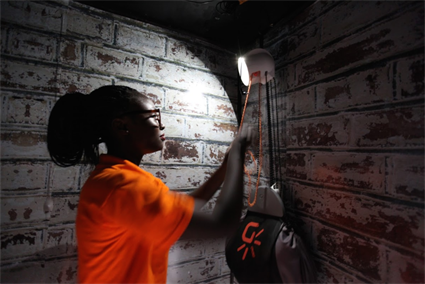Even in Off-grid Living, Let There Be Light

Let’s do a bit of basic physics to determine the weight of an object that would need to be lifted two meters (a bit over 6 feet) off the ground to power a light like that found in a common flashlight for an hour.
The brightness of a common flashlight is 25 lumens, and makes use of an LED of 150 lumens/Watt, so we need 0.17 Watts.
We know that energy (E, in Watt-seconds) = mass (M, in kg) * gravitational acceleration (G, in meters/sec2) * height (H, in meters)
and
Energy (in Watt-seconds) = power (Watts) * time (in seconds)
Substituting, we get MGH = PT, or M = PT/GH. Plugging the numbers, we get (0.17 * 3600) / (9.8 * 2) = ~31 KG or ~69 pounds.
That’s a considerable amount, which is why devices like these make use of like gears or simple torque converters, like those used in grandfather clocks. Torque = force * radius, and the device shown here would reduce the force required by a factor of at least 20, enabling a small child to do the job.

